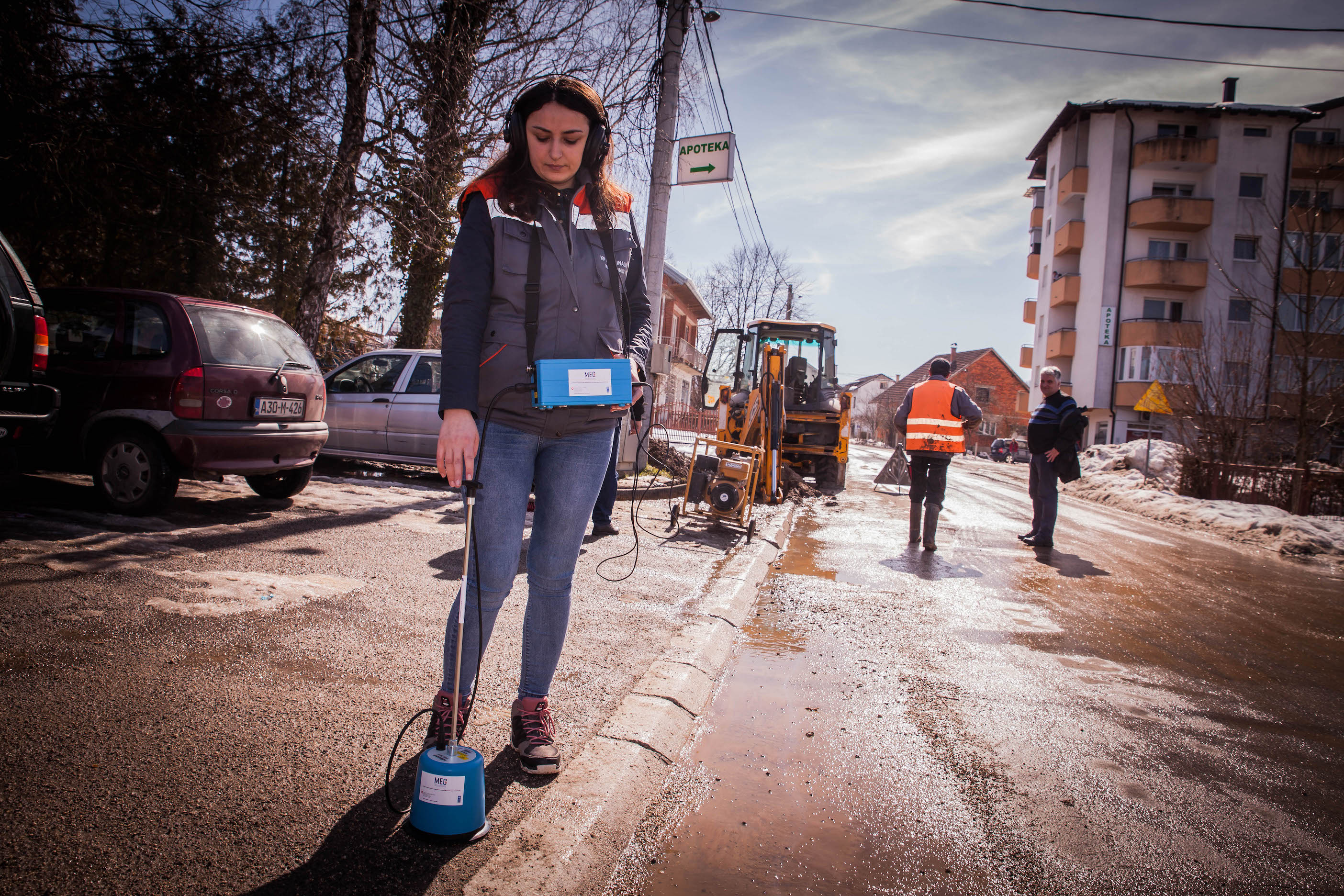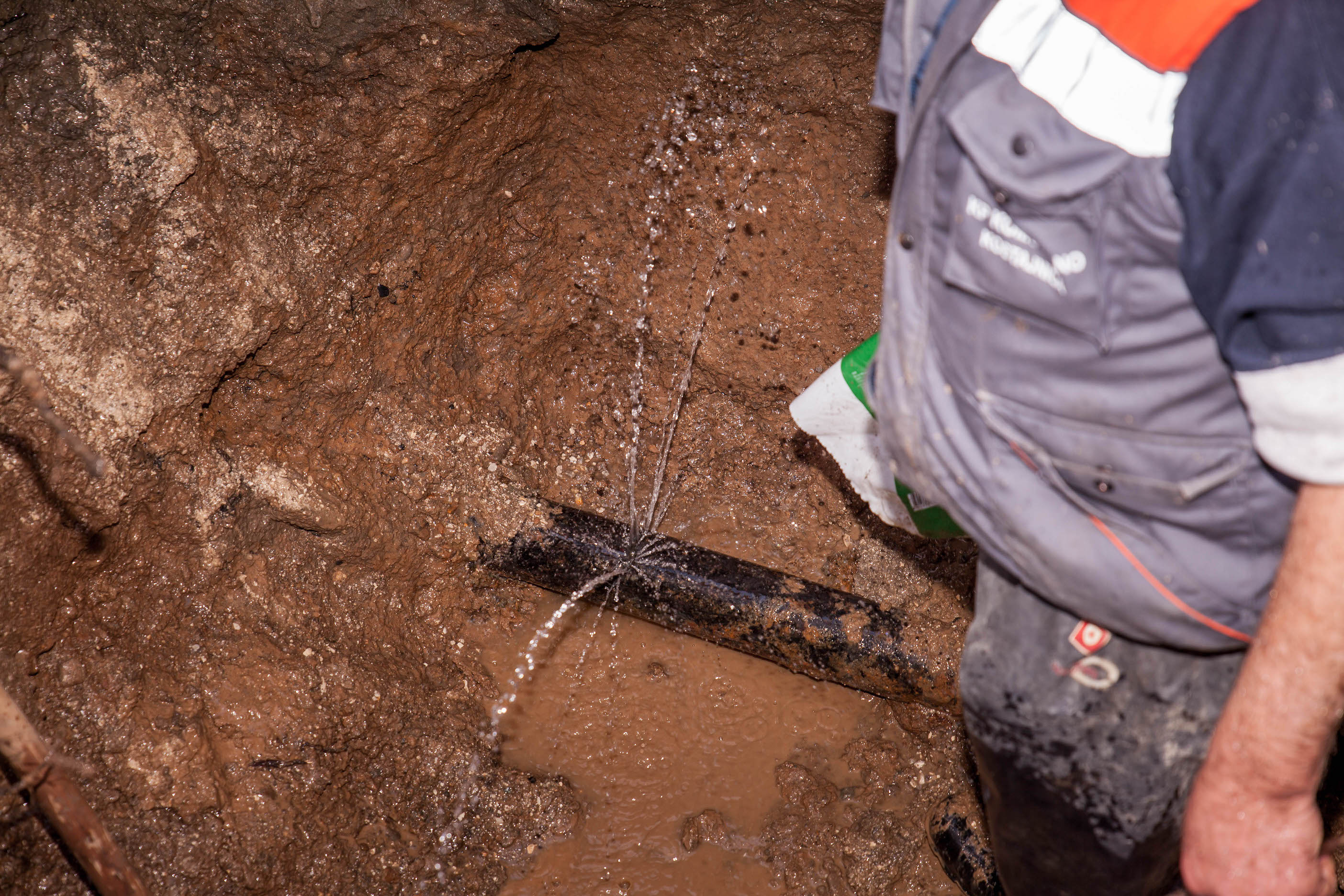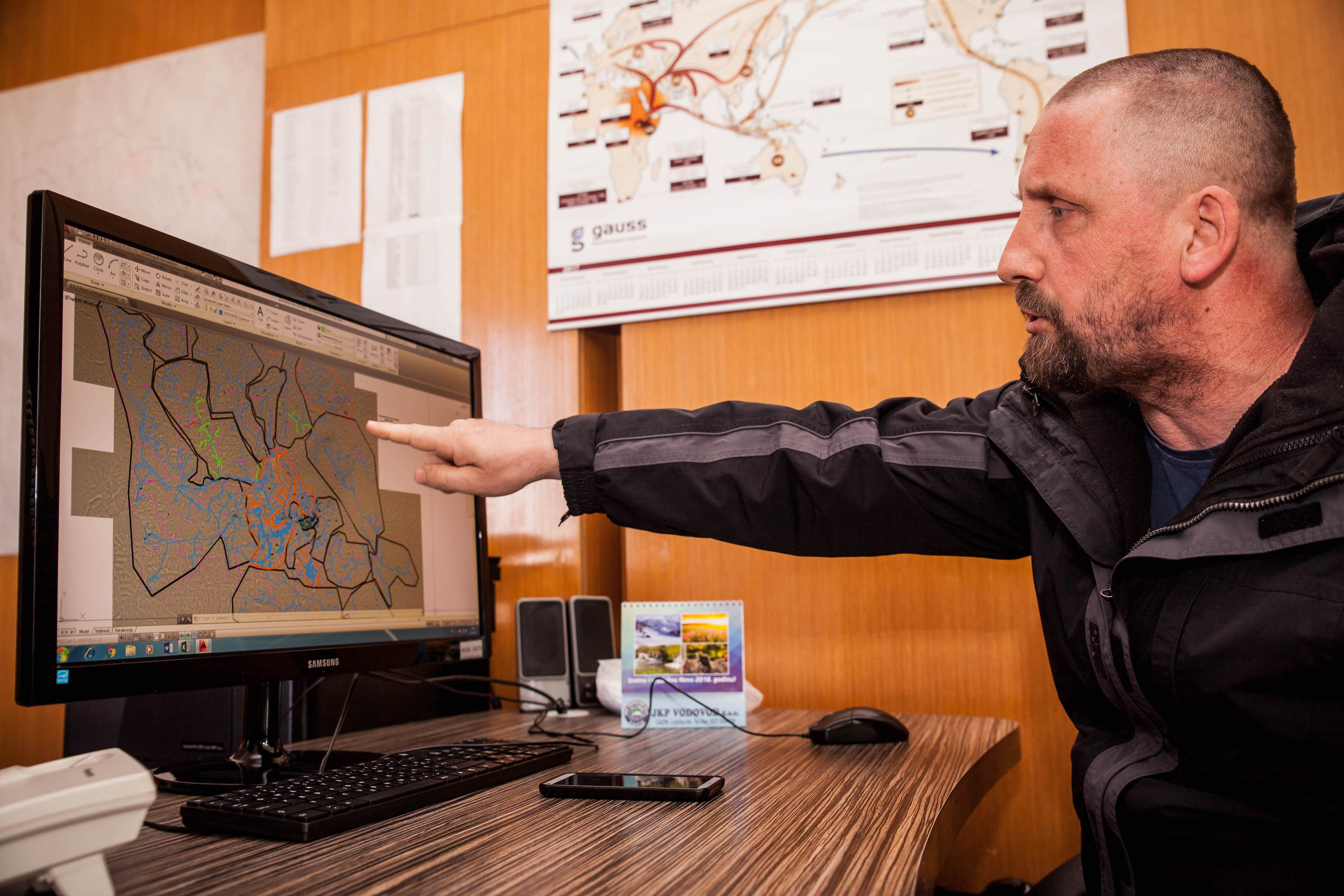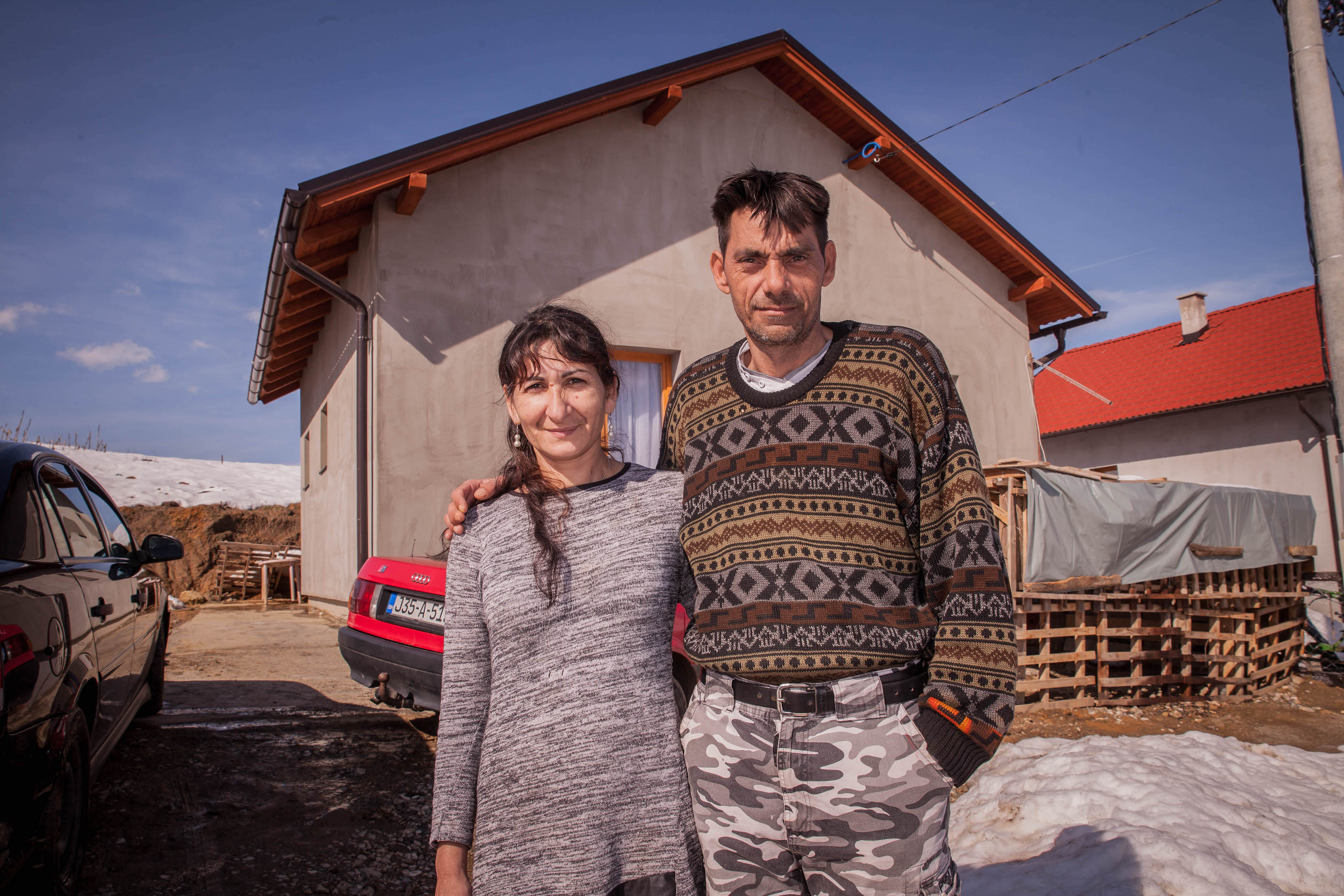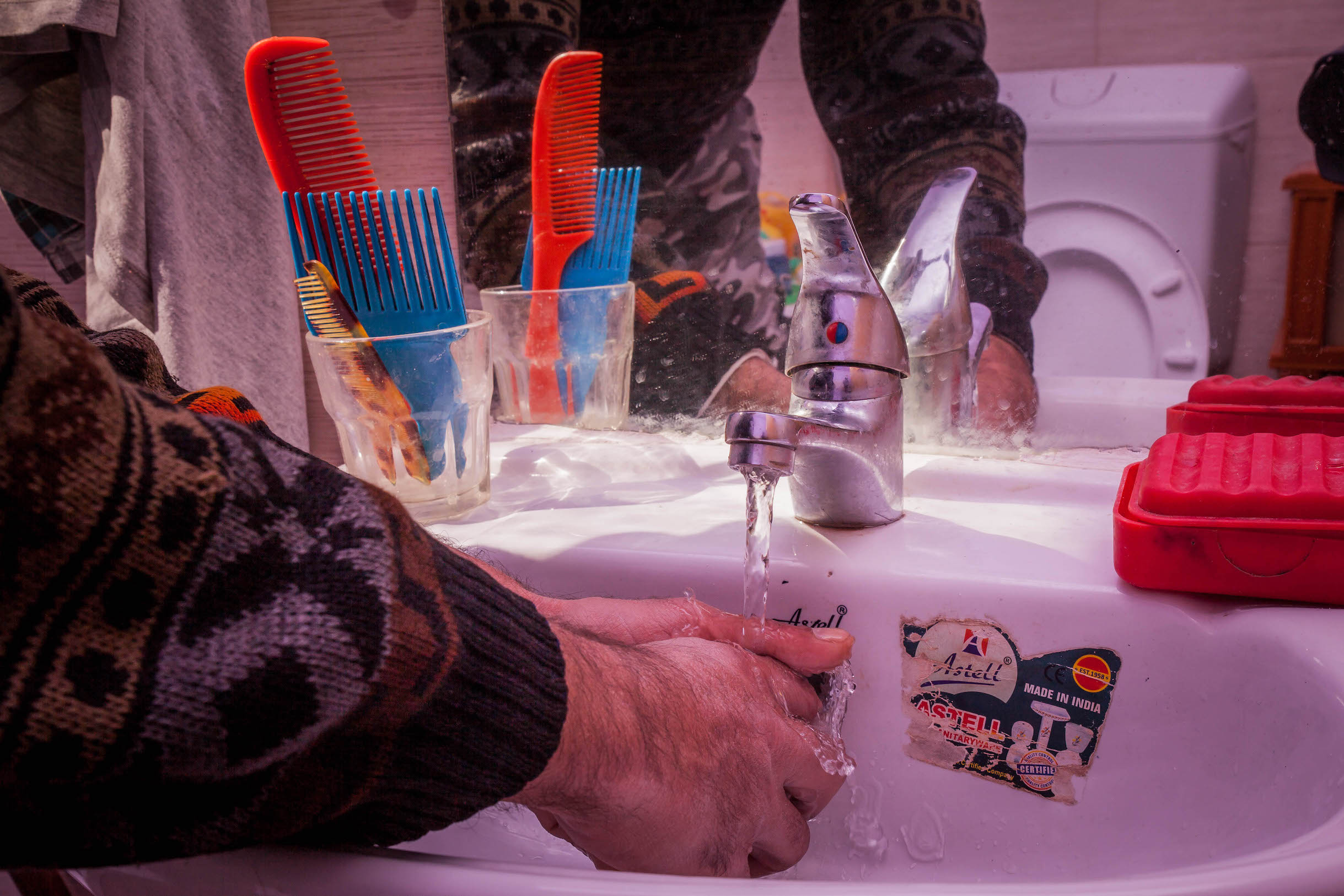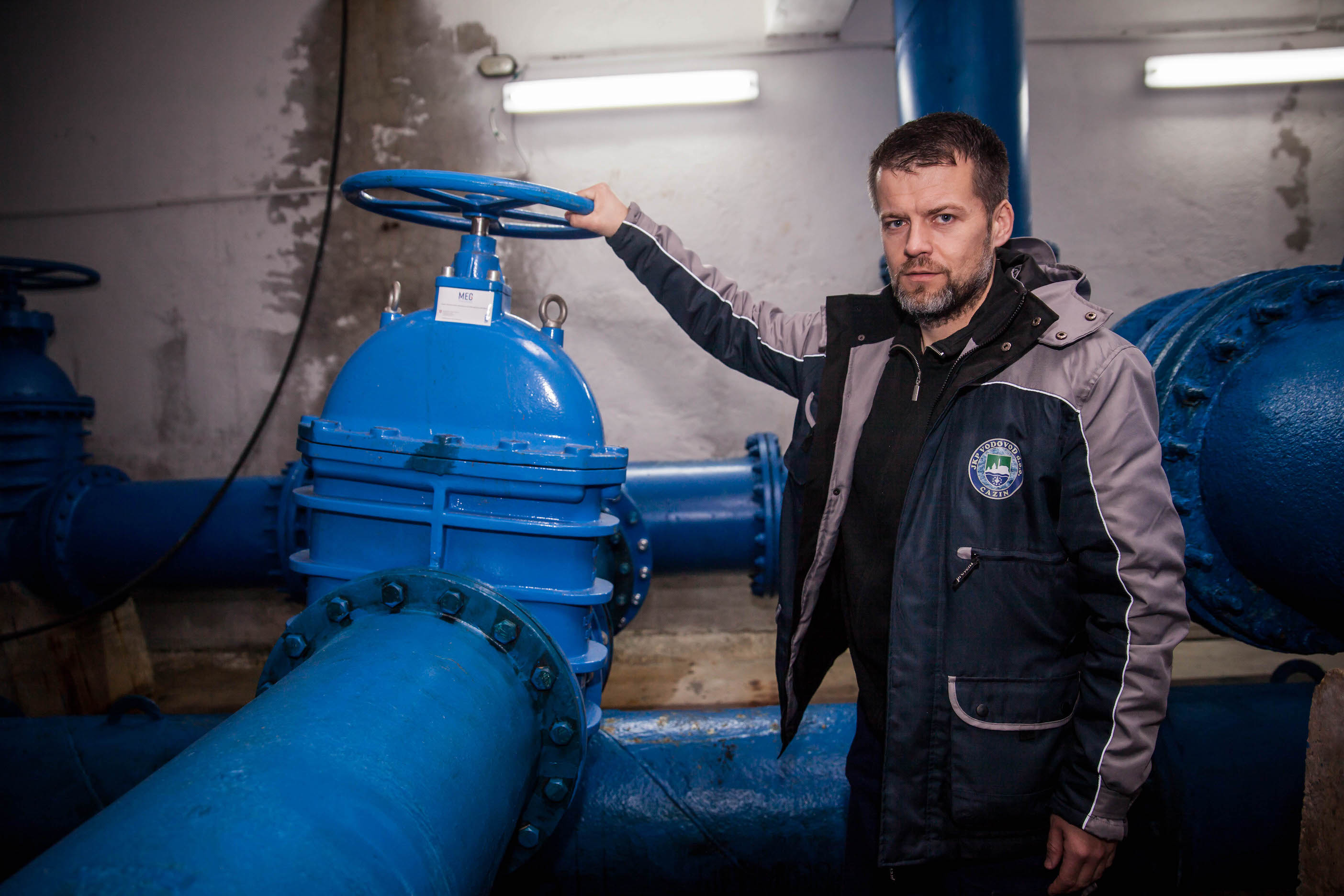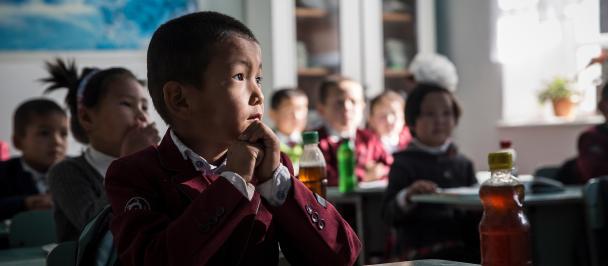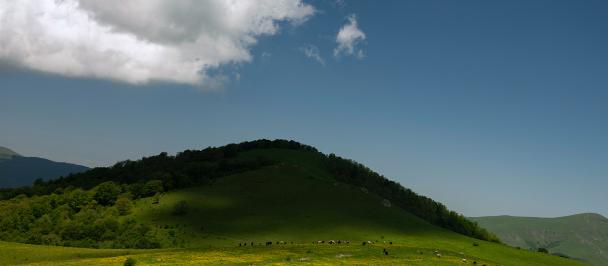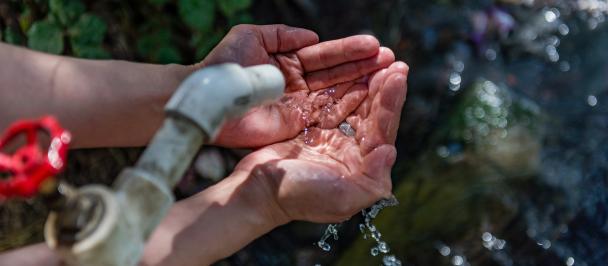New technologies help find problems. For instance, using sound detection, the Geofon detects leaks in pipelines. Photos: Igor Šamara/UNDP Bosnia and Herzegovina
Rasim Velić – who lives in the town of Gornja Koprivna in Bosnia and Herzegovina - carries water uphill from a spring 200 meters away. He's sprightly, but at 80-years old it's difficult to maintain this routine. When he finally got connected to the network, he had only one faucet in the basement of his old adobe house.
Despite Bosnia and Herzegovina's abundant water resources, access to safe drinking water is well below EU standards: 42 percent of the population can only access water from private or local wells, springs or village supplies. In most cases, these don't have the capacity to provide a regular water supply the entire year. Because the quality is not controlled, the water often doesn't meet official health and water standards.
The other 58 percent receive water from registered utility companies, but although the water is clean, the service is irregular during dry summer months. The systems are old and have not been maintained regularly, which results in more than 50 percent water loss, malfunctions and high distribution costs.
Because the networks are inefficient and financially unsustainable, municipalities and water supply companies can barely sustain the services they offered in the former Yugoslavia when the entire system was subsidised by the national government. Public utility companies were run by local authorities, operating independently, who often took advantage. With no clear pricing and billing system, there was no transparency about where the money was going, and citizens paid for service they didn't get.
Since 2016, 18 municipalities, supported by the Swiss Development Cooperation (SDC) and implemented by UNDP, have been working to improve the quality and availability of water supplies for over 700,000 people.
Rasim Velić points to where he used to walk for water.
Due to leaks and malfunctions, there was almost 70 percent water loss in some systems.
Maintenance of the utility network is facilitated by a new GIS database.
New regulations have been passed. Now a transparent billing system is in the works, that uses the same methodology for all companies, but reflecting actual service and maintenance costs. Unlike before, people will now know what they are paying for, with no hidden tariffs. Employees are being trained to work with customers, which goes a long way towards enhancing trust between the system and the community.
But the biggest challenges is to turn public utility companies into sustainable businesses, through service improvements and reduced operating costs. In order to achieve that, new technologies and equipment are being introduced to reduce water loss (now almost 70 percent), help monitor repairs and make sure clean water actually reaches homes.
Meanwhile, subsidies from local governments will go to low-income groups, helping them to pay their monthly water bills. Currently, about 700 citizens have been supported, with intentions to increase.
Elvisa and Momčilo Kejić outside their home.
They now have access to a regular supply of water.
Momčilo and Elvisa Kejić, for instance, are now receiving support. They moved with their two sons to Kostajnica in September 2017, and their new home is connected to the public water supply system.
“In Podoška, we had to carry water from the well and used it for drinking, cooking, doing laundry, for everything,” he remembers. That well would often dry out in the summer, when they would have to walk three or four kilometres to another water source. ”Now we have water in our kitchen, in the bathroom, everywhere, ” says Momčilo, who has also been hired by the Kostajnica water utility company.
Rasim also recently moved into a new home, with a subsidized water line.”What a difference it is: you just open a faucet whenever you want, wash anything you want. Everything is much simpler,“ he says.
Sustainbility will allow companies to improve their services not only to those who have it, but also to those who need it. The project is a long-term investment, which intends to rehabilitate the entire water supply network in areas with the highest water loss and expand to new regions.
Infrastructure has improved at the Mutnik reservoir in Cazin.

 Locations
Locations